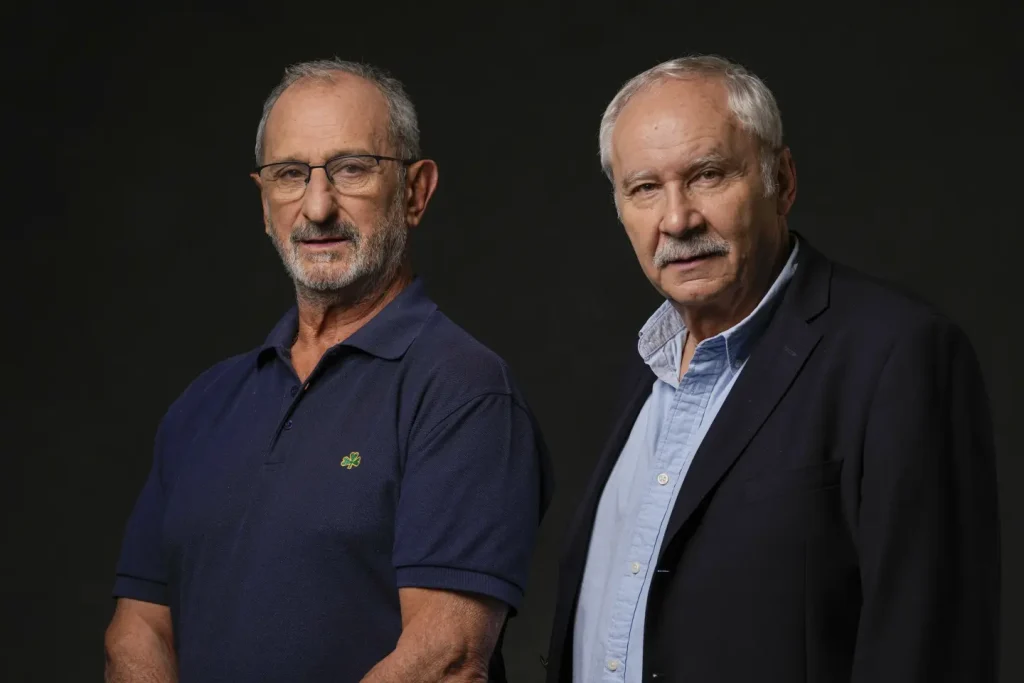The human experience is replete with tales of survival, resilience, and the triumph of the human spirit in the face of adversity.
These narratives, often harrowing and poignant, serve as testaments to the indomitable will of individuals confronted with extraordinary challenges.
One such narrative, the tragic yet awe-inspiring saga of the Uruguayan Air Force plane disaster, has captured the imagination of storytellers and audiences alike for decades. J.A. Bayona’s latest cinematic endeavor,
“Society of the Snow,” offers a compelling and unflinching portrayal of this remarkable tale, breathing new life into a story that continues to resonate with audiences around the world.
At the heart of “Society of the Snow” lies the deeply personal and profoundly moving account of Gustavo Zerbino, a survivor of the 1972 Andes plane crash, whose experiences are vividly brought to life on the silver screen.
Zerbino’s visceral response to the film, as he described feeling submerged “into boiling water,” underscores the enduring impact of the events that unfolded over 50 years ago.
His sentiments serve as a poignant reminder of the enduring trauma and resilience of those who endured the ordeal, and the profound emotional resonance that continues to shape their lives.
The film, based on Pablo Vierci’s eponymous book, meticulously retraces the harrowing journey of the Old Christians rugby team and their companions, thrust into a desperate struggle for survival amidst the unforgiving Andes mountains.
The narrative unfolds with unflinching honesty, delving into the depths of human endurance and the moral complexities that arose as the survivors grappled with the dire circumstances they faced.
The unfathomable challenges of enduring snowstorms, avalanches, and starvation, culminating in the agonizing decision to consume the flesh of the deceased, are portrayed with a raw and unvarnished authenticity that is both haunting and deeply affecting.
The enduring significance of this story is underscored by its enduring presence in popular culture, from its depiction in films and documentaries to its influence on a diverse array of artistic expressions.
Zerbino’s reflection on past retellings of the tragedy, and his assertion that “Society of the Snow” fills a crucial void in the portrayal of their experiences, speaks to the profound impact of this cinematic adaptation.
It is a testament to the enduring power of storytelling to illuminate the depths of the human experience and to provide a voice to those whose stories have remained untold.
Central to Bayona’s directorial vision is a commitment to honoring the experiences of the survivors and victims, and to capturing the essence of Uruguayan culture within the fabric of the narrative.
The film transcends mere dramatization, offering a reflective exploration of the human condition and the cultural context that shaped the experiences of those who endured the tragedy.
Through Vierci’s book, Bayona found a profound understanding of the characters and the cultural nuances that underpin their resilience, underscoring his dedication to crafting a narrative that is as authentic as it is emotionally resonant.
“Society of the Snow” stands as a testament to the enduring power of storytelling to illuminate the depths of the human experience and to provide a voice to those whose stories have remained untold.
Through its unflinching portrayal of the Andes plane crash and its aftermath, the film invites audiences to bear witness to the indomitable human spirit in the face of unimaginable adversity.
It is a poignant reminder of the enduring legacy of the survivors and victims, and a celebration of the cultural resilience that continues to define their experiences.
In conclusion, “Society of the Snow” stands as a masterful testament to the enduring power of storytelling to illuminate the depths of the human experience and to provide a voice to those whose stories have remained untold.

Through its unflinching portrayal of the Andes plane crash and its aftermath, the film invites audiences to bear witness to the indomitable human spirit in the face of unimaginable adversity.
It is a poignant reminder of the enduring legacy of the survivors and victims, and a celebration of the cultural resilience that continues to define their experiences.
Director J.A. Bayona’s latest cinematic endeavor, tentatively titled “Untitled Project,” stands as a testament to his commitment to honoring the connection between the living and the dead.
As an extension of his previous work, including the acclaimed “Jurassic World: Fallen Kingdom,” Bayona’s latest film delves into the realm of human resilience, compassion, and the enduring spirit in the face of adversity.
The narrative, narrated by Numa Turcatti and portrayed by Enzo Vogrincic, serves as a poignant reminder of the fragility of life and the enduring impact of those who have passed.
This seamless integration of the living and the dead within the film’s fabric is a testament to Bayona’s directorial prowess and his ability to evoke profound emotional responses from his audience.
The decision to narrate the film from the perspective of the deceased, as expressed by Vierci, underscores the film’s profound exploration of human experience.
Vierci’s insight into the story as a portrayal of 45 individuals navigating adversity and fostering a society of compassion and mercy further elevates the film’s thematic depth.
Bayona’s deliberate choice to avoid sensationalizing the harrowing experiences of the passengers and crew members is a mark of his respect for the human experience.
By engaging with survivors, victims’ loved ones, and visiting the crash site, Bayona has meticulously woven a narrative that pays homage to the resilience and humanity of those involved, while refraining from exploiting their suffering for dramatic effect.
The incorporation of Candombe Uruguayan music and Turcatti’s favorite song from a popular Uruguayan band serves as a cultural homage, enriching the film’s narrative tapestry.
Bayona’s dedication to immersing himself in the culture and time period of Uruguay is evident, as he sought to authentically capture the essence of the story and its historical context.
The involvement of crash survivors, such as Carlitos Páez, who portrays his own father in the film, further underscores Bayona’s commitment to authenticity.
By subjecting his cast to a medically supervised weight-loss program and shooting in freezing conditions, Bayona’s meticulous approach reflects his unwavering dedication to portraying the reality of the survivors’ experiences.
The recognition garnered by the film, including its shortlisting for the best international feature film at the 2024 Academy Awards, is a testament to the impact of Bayona’s storytelling.
The film’s ability to captivate and resonate with audiences on a global scale underscores its universal themes of resilience, compassion, and the enduring human spirit.
Vogrincic’s unwavering determination to be a part of this powerful narrative speaks to the profound impact of Bayona’s vision. His commitment to the story is a testament to the film’s ability to inspire and engage those involved in its creation.
In conclusion, “Untitled Project” stands as a masterful testament to J.A. Bayona’s directorial brilliance and his unwavering dedication to honoring the living and the dead.
Through its poignant narrative, cultural richness, and commitment to authenticity, the film resonates as a powerful exploration of the human experience, leaving an indelible mark on the cinematic landscape.
The human experience is a tapestry woven from the threads of individual stories, collective struggles, and shared triumphs.
It is a narrative that transcends borders, cultures, and time, encapsulating the essence of our existence. The words of the actor, reflecting on the profound impact of a film, resonate with a profound truth: our stories are not confined to personal narratives; they are a testament to the human condition as a whole.
This essay seeks to delve into the significance of preserving legacies, the resilience of the human spirit, and the power of storytelling as exemplified in the context of the survivors of a tragic event.
The words of the former rugby player, Zerbino, echo with a poignant sense of duty and reverence as he speaks of his commitment to preserving the legacies of his late team members.
The notion of legacy encompasses far more than mere remembrance; it embodies the essence of those who have departed, their aspirations, and the impact they have left on the world.
In the context of the survivors and their mission, the act of preserving legacies becomes a testament to the enduring spirit of those who perished, a dedication to ensuring that their stories and sacrifices are not forgotten.
The film, as described by Zerbino, served as a catalyst for engaging the relatives of the victims with the retelling of the story.
It provided a medium through which the pain of the past was reconciled with the need to honor and remember.

The standing ovation that greeted the end credits symbolizes not only appreciation for the artistry of the film but also a collective acknowledgment of the resilience and fortitude exhibited by those who experienced the tragedy firsthand.
It is a poignant reminder that the preservation of legacies is not merely an individual endeavor; it is a collective responsibility to honor the lives and memories of those who have shaped our shared history.
The survivors’ commitment to sharing their story reflects the indomitable resilience of the human spirit in the face of adversity.
Their willingness to bear witness to the events that unfolded, to carry the weight of their friends’ legacies, and to transcend their own trauma speaks volumes about the strength inherent in the human experience.
It is a testament to the capacity of individuals to transform personal tragedy into a force for collective healing and remembrance.
The survivors’ mission, as championed by the film, exemplifies the transformative power of resilience. Their determination to keep the memories of their friends alive serves as a beacon of hope and inspiration, illuminating the path for others to find solace and meaning in the face of loss.
In doing so, they not only honor the lives of those they have lost but also reaffirm the enduring bond that connects humanity in times of hardship and sorrow.
The actor’s reflection on the film’s impact encapsulates the profound significance of storytelling as a means of shaping collective identity.
Through the retelling of their harrowing experience, the survivors and the victims’ relatives found a new connection to their shared history.
They navigated the depths of their pain and suffering, ultimately finding solace and reconciliation through the narrative presented in the film.
The power of storytelling lies in its ability to transcend individual experiences and resonate with the broader human experience.
It serves as a bridge that connects us to our past, illuminates the present, and shapes the future. In the context of the survivors, storytelling becomes a means of preserving the memories of those they have lost, of honoring their sacrifices, and of imparting lessons learned from their collective journey.
The words of Zerbino and the reflections on the impact of the film serve as a poignant reminder of the enduring power of the human experience.
The commitment to preserving legacies, the resilience of the human spirit, and the transformative nature of storytelling converge to form a narrative that transcends individual stories and speaks to humanity as a whole.

In the face of tragedy, the survivors and the victims’ relatives have demonstrated the capacity of the human spirit to endure, to find meaning in suffering, and to forge connections that bind us as a global community.
Their collective journey stands as a testament to the enduring legacy of the human experience, a legacy that speaks to the resilience, compassion, and unity that define us as a species.
